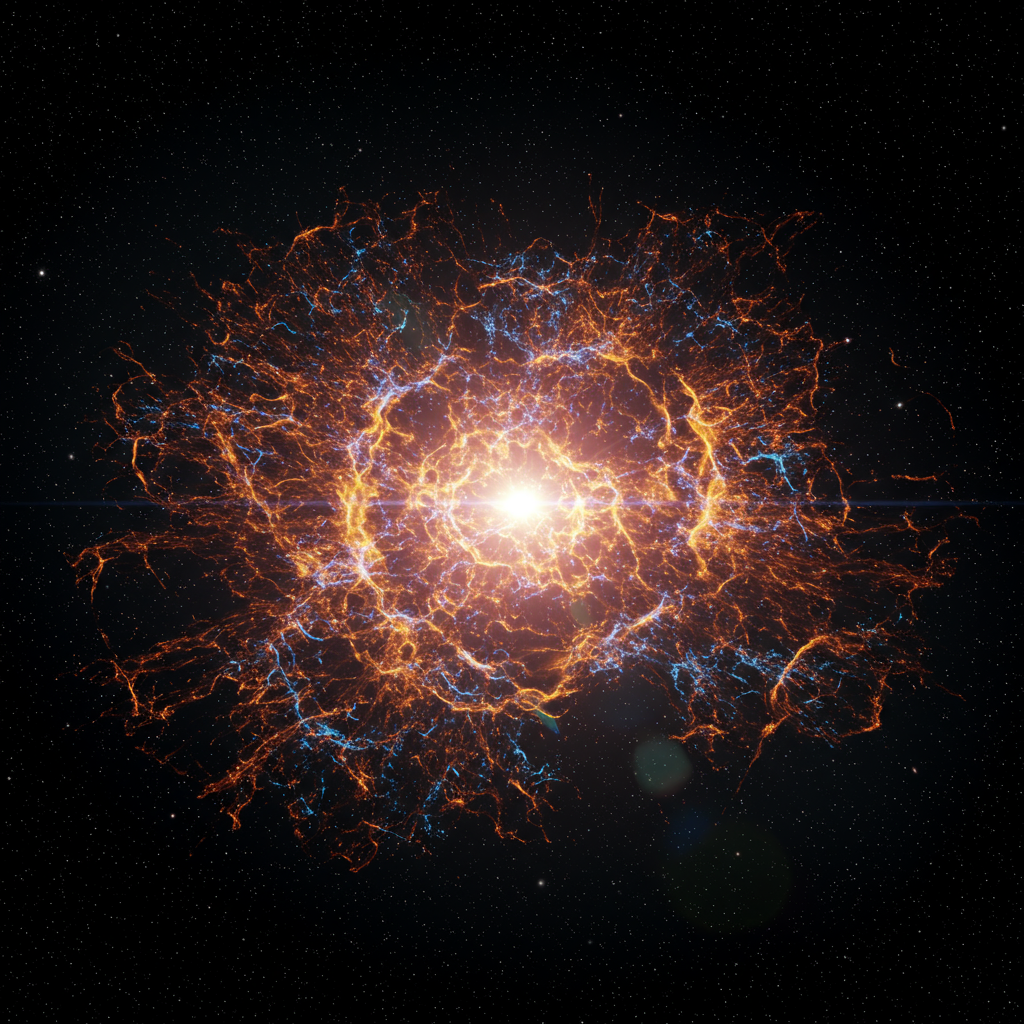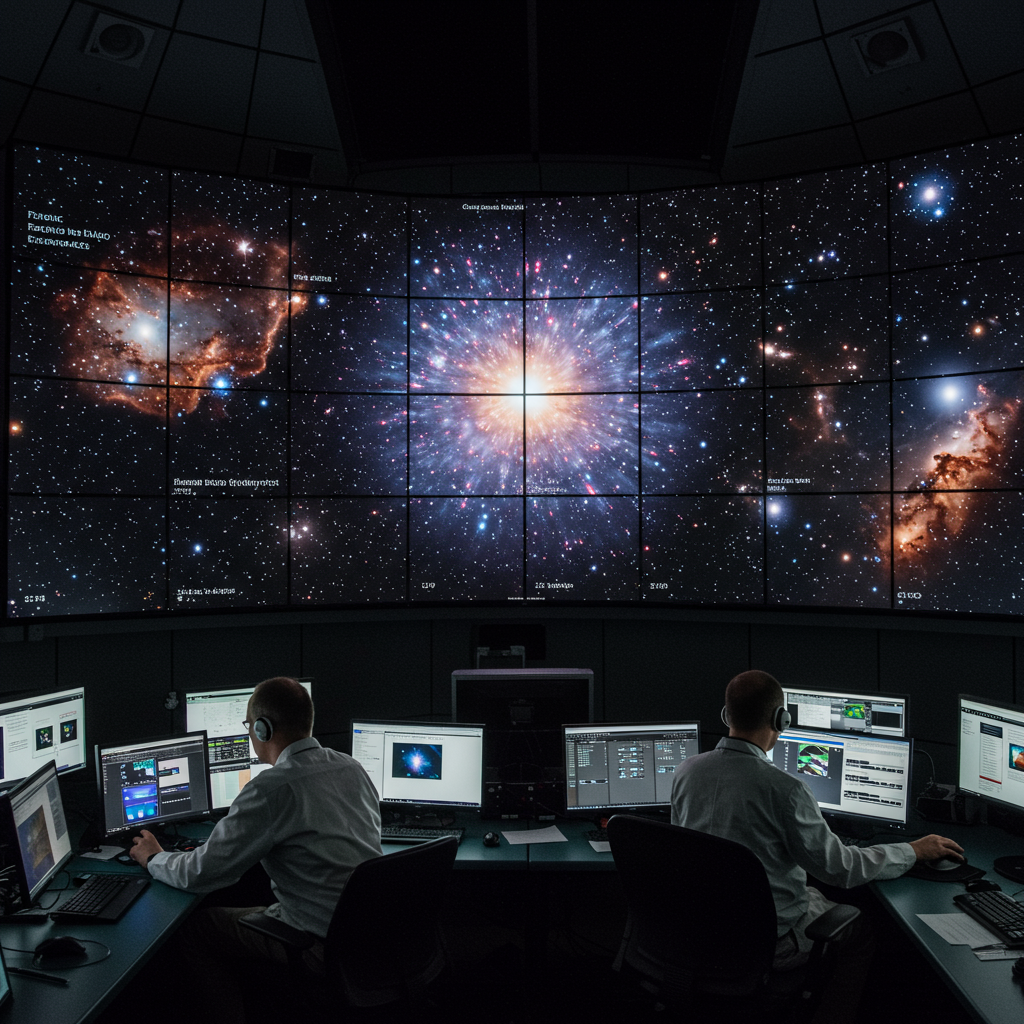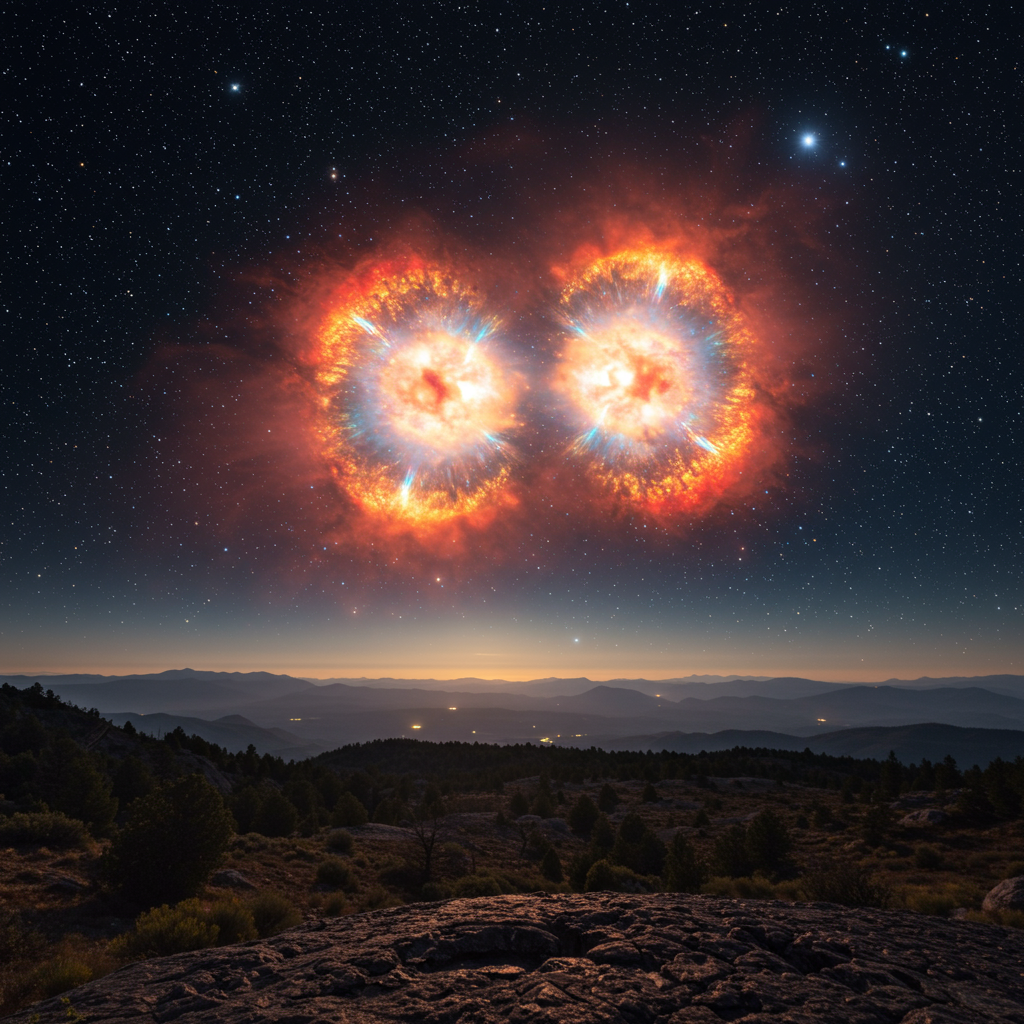For decades, astronomers have grappled with one of the universe’s biggest mysteries: the case of the missing matter. Cosmological models, which describe the structure and evolution of the cosmos, have long predicted that a significant portion—roughly a third—of the universe’s “ordinary” matter should exist but hadn’t been definitively located. This isn’t the elusive dark matter, which remains invisible and mysterious because it doesn’t interact with light. Instead, scientists were searching for the baryonic matter – the stuff that makes up everything we can see, from stars and planets to galaxies and even our own bodies (protons, neutrons, and electrons).
Now, recent groundbreaking discoveries suggest that this long-sought baryonic matter wasn’t missing at all, but merely hidden, primarily lurking in the vast cosmic structures that weave the universe together like an enormous web.
Locating the Hidden Baryons
One significant breakthrough involves the discovery of a colossal filament of incredibly hot gas stretching across space. Astronomers found this structure linking four galaxy clusters within the Shapley Supercluster, one of the most massive gatherings of galaxies in the nearby universe. This newly observed filament is immense, spanning an astonishing 23 million light-years—about 230 times the width of our own Milky Way galaxy—and containing roughly 10 times the mass of the Milky Way itself.
With a staggering temperature of around 18 million degrees Fahrenheit (10 million degrees Celsius), this gas filament accounts for a substantial amount of the predicted missing baryonic matter. Crucially, its detection and characterization provide strong validation for the leading models of the cosmos, confirming that the simulations predicting where this matter should reside were indeed correct.
Detecting such structures is a significant challenge. Though theorists expected these filaments to exist, they are incredibly faint and diffuse, making their light easily washed out by brighter cosmic sources like galaxies and the powerful emissions from supermassive black holes.
To overcome this, a team of astronomers combined X-ray data from the European Space Agency’s (ESA) XMM-Newton telescope and the Japan Aerospace Exploration Agency’s (JAXA) Suzaku satellite with optical observations. Suzaku provided a wide view, while XMM-Newton allowed researchers to zoom in and precisely identify and remove contaminating X-ray signals from other sources, isolating the faint glow of the filamentary gas itself. This meticulous approach was key to unlocking the filament’s properties.
Independent Evidence from Fast Radio Bursts
Adding further weight to the solution of the missing matter puzzle is an entirely separate line of research utilizing Fast Radio Bursts (FRBs). These extremely powerful, millisecond-long pulses of radio waves originate from distant galaxies and serve as cosmic probes.
As FRBs travel across billions of light-years, their radio waves interact with the matter they encounter, particularly free electrons in the tenuous gas between galaxies. This interaction causes longer wavelengths within the burst to be delayed compared to shorter ones – a phenomenon called dispersion. By precisely measuring this delay, astronomers can determine the total amount of baryonic matter along the FRB’s path.
By analyzing 69 localized FRBs (bursts whose host galaxies and distances were known), astronomers effectively “weighed” the diffuse baryonic matter in the universe’s vast emptiness. This study concluded that approximately 76% of ordinary matter resides in the intergalactic medium, with another 15% in the extended halos around galaxies. Only about 9% was found within galaxies themselves (in stars and cold gas).
Remarkably, these findings also align exceptionally well with predictions from cosmological simulations, providing independent observational confirmation of where the missing baryonic matter has been hiding – not just concentrated in dense filaments, but also spread thinly throughout the intergalactic space and galaxy halos.
The Universe’s Cosmic Web Revealed
Both the detection of the vast hot gas filament and the FRB analysis point towards the same conclusion: the missing baryonic matter is predominantly located in the structures of the Cosmic Web. This is the universe’s large-scale architecture, a network of vast filaments and sheets of matter that connect dense nodes (galaxy clusters) and surround enormous cosmic voids. Galaxies formed and gathered along this web over billions of years.
Understanding these colossal structures is critical to understanding how the universe evolved to its current state. Different types of observations using various telescopes provide complementary views of the Cosmic Web’s complexity. For instance, radio telescopes like the European Low Frequency Array (LOFAR) reveal radio-emitting tendrils trailing from radio galaxies within clusters. These filaments, though distinct from the hot gas baryonic filaments, highlight the dynamic interaction between energetic jets from black holes and the intergalactic medium, offering insights into particle acceleration and magnetic fields within these large structures. Similarly, X-ray telescopes like Chandra have revealed vast envelopes of energized particles surrounding galaxy clusters, further illustrating the turbulent and complex environment where much of the universe’s ordinary matter resides.
Validating Decades of Cosmology
Collectively, these recent discoveries validate decades of theoretical work in cosmology. The fact that different observational methods — studying a concentrated hot gas filament with X-ray/optical data and probing diffuse intergalactic gas with Fast Radio Bursts — both converge on confirming the predicted location and amount of missing baryonic matter is a powerful testament to the accuracy of our standard models of the universe.
While the puzzle of the missing ordinary matter appears largely solved, the nature of dark matter remains one of astronomy’s biggest open questions, actively being probed by missions like the upcoming Nancy Grace Roman Space Telescope using techniques such as gravitational lensing to map its invisible distribution.
The resolution of the missing baryonic matter mystery marks a significant step forward, reinforcing our understanding of the universe’s composition and the crucial role of the Cosmic Web in its large-scale structure and evolution. It sets a new benchmark for detecting the faint material woven throughout the cosmos, confirming that the universe’s “missing” ordinary matter was hiding in plain sight, right where our models said it should be.




